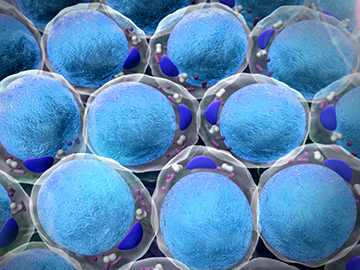Notch is important for processes such as determining cell fate during embryonic development. In addition, mutations of the gene encoding Notch are found in some diseases, including more than half of all cases of T-cell acute lymphoblastic leukemia (T-ALL).
The study could therefore inform researchers’ understanding of what is going wrong in such diseases, said co-corresponding author Joseph Loparo, assistant professor of biological chemistry and molecular pharmacology at Harvard Medical School.
The tools the team created should help scientists investigate the role physical force plays in regulating a variety of biological systems.
“Knowing that this ancient system for cell-cell communication has built into it a dependence on mechanical force has relevance to the fundamental question of how Notch signaling guides normal developmental decisions in multicellular organisms, and should provide insight into mutations that likely bypass the force requirement in disease,” said Stephen Blacklow, the Gustavus Adolphus Pfeiffer Professor and chair of the Department of Biological Chemistry and Molecular Pharmacology at HMS, who led the study with Loparo.
“I am excited that our work provides new insights into Notch signaling, and we hope that the tools we developed will be useful to our colleagues in the Notch signaling field,” said Wendy Gordon, who conducted the work as a postdoctoral researcher in the Blacklow lab. Gordon is now an assistant professor at the University of Minnesota.
“Furthermore, altered mechanical forces in the microenvironment of cells in disease states like cancer is an emerging concept that necessitates new tools like the ones we developed to understand how other proteins on the surface of cells use mechanical force to communicate signals to the inside of cells,” she said.
Open sesame
Before this study, researchers understood the basic order of events needed to convey a Notch message. But pieces were missing.
They knew that a molecule called Delta on the surface of the “speaking” cell binds to a molecule called Notch on the surface of the “listening” cell. Then an enzyme swoops in, and, like a pair of scissors, snips off a piece of Notch, releasing the signal into the cell.
Notch’s “cut here” site is initially hidden. It wasn’t clear how it becomes available to the enzyme scissors. Experiments showed that the mere binding of Delta and Notch molecules wasn’t enough to expose it.
Fifteen years ago, scientists proposed that a mechanical force might be needed. In the current study, Blacklow and Loparo’s teams became the first to directly test the idea—and show that it’s probably correct.
“You need to pull on Notch,” said Blacklow.
Magnetic pull
To make their discoveries, the researchers first set up simplified Notch systems on a glass slide. They attached tiny magnetic beads to individual Notch molecules tethered to the slide and bathed them in the Notch-cutting enzymes.
At first, nothing happened. Then they used what they called magnetic tweezers to pull on the beads. When they achieved enough force, the Notch molecules were cut and the beads floated away.
“It was a really clever idea,” said Blacklow of Gordon’s experimental design.

When pulled, fluorescently tagged magnetic beads are cut free of Notch and float away. Experiment shown at 100 times normal speed.
The tests revealed that the force needed to reveal the cutting site was within the realm of what might occur in a real cell.
The researchers pursued their findings in a second set of experiments conducted in real cells using complete Notch and Delta molecules. They confirmed that magnetically tugging at Delta within a certain range of forces revealed Notch’s cutting site and released the signal without tearing apart either molecule.
Joining forces
Finally, the researchers built synthetic alternatives to the natural Delta-Notch connections to test whether anything about the natural bond other than the pull force might help expose the cutting site.
“Is it just a tether?” asked Loparo. “Or does something else in the connection lower the barrier to the door opening?”
Gordon designed one synthetic system. Norbert Perrimon, the James Stillman Professor of Developmental Biology at HMS, and members of his lab designed another.
Both systems showed that the pull force alone was sufficient to reveal the cutting site and release the signal. The experiments also revealed which parts of the Delta-Notch system are essential.
As they slot one more piece into the puzzle of Notch signaling, the research teams look forward to exploring new questions their work has raised.
“We came to this problem with two complementary areas of expertise,” said Loparo. “Neither of our labs could’ve done this on their own. It’s a fun and exciting way to do science.”
This work was supported by the National Institutes of Health (grants R01 CA092433 and P01 CA119070) and the Howard Hughes Medical Institute.
